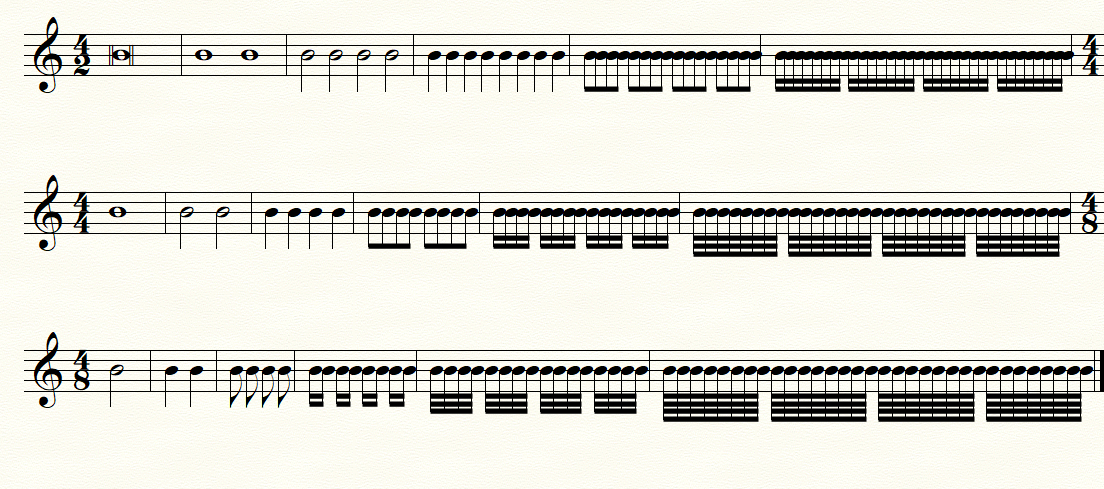Integrated Aural Skills 2018-19
Ear Training - How Rhythmic Dictation Works
Introduction to Rhythmic Dictation
Simple Time Signatures
This week, we will review the simple time signatures. When writing down rhythmic dictations, try to establish a sense of the pulse, remembering what your beat note is. Not all beat notes are quarter notes! For example, if the time signature is 4/8, the beat note is an eighth note.
In simple time signatures, the numerator indicates the number of beats in the measure, and the denominator indicates the beat note. Please review the following simple time signatures: 2/2, 3/2, 4/2; 2/4, 3/4, 4/4; 2/8, 3/8, 4/8; 2/16, 3/16, 4/16. Questions to ask: what is the beat note? What are all the possible divisions and subdivisions of the beat?
Study the following excerpt that shows possible divisions and subdivisions of quadruple time signatures. Notice the appearance of the breve, the whole note, half note, quarter note, and so on.
Try making your own chart for triple or duple time signatures!
Seeing and Hearing
Part of learning rhythm successfully is knowing what a rhythm sounds like and what a rhythm looks like on paper. For practice, think about the rhythm of a well-known piece of music such as “The Star-Spangled Banner” or “America the Beautiful.” Try writing down the rhythm from memory, then look up the score on a Google image search to see if you were correct.
Compound Time Signatures
In the coming units, we will intensively study compound time signatures. A compound time signature is one in which the numerator is divisible by three. Therefore, in 6/8 time, if we divide the numerator by three, we get two, meaning that there are two beats in the measure. The beat note is a dotted quarter - i.e., equivalent in duration to three eighth notes.
